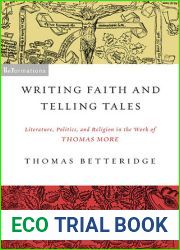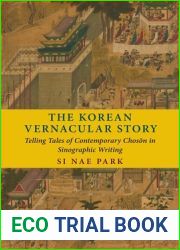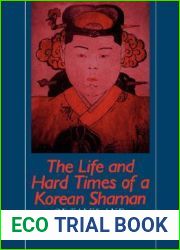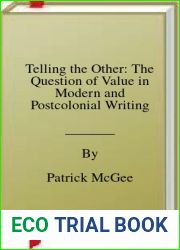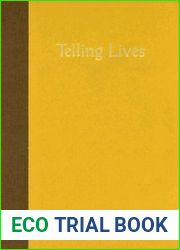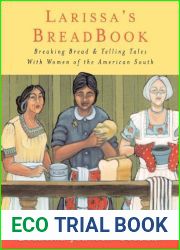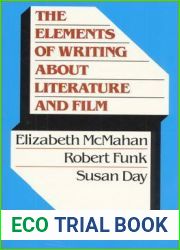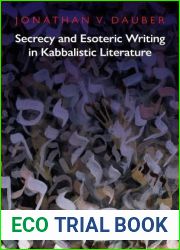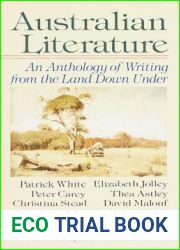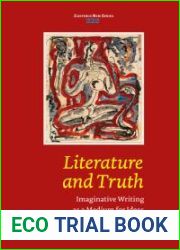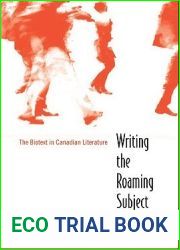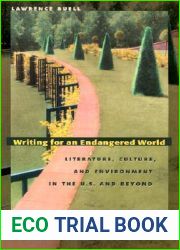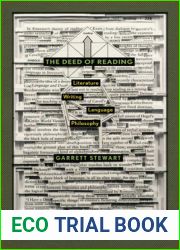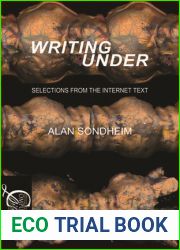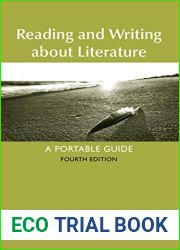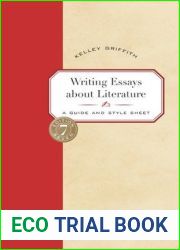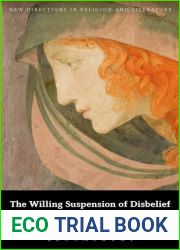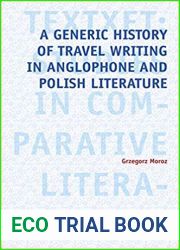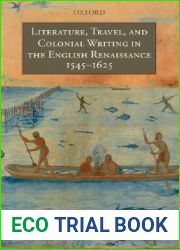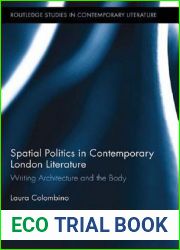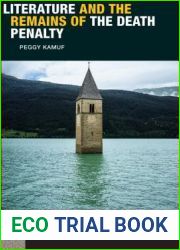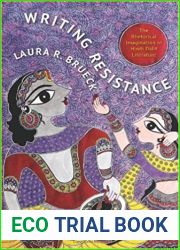
BOOKS - Writing Faith and Telling Tales: Literature, Politics, and Religion in the Wo...

Writing Faith and Telling Tales: Literature, Politics, and Religion in the Work of Thomas More (ReFormations: Medieval and Early Modern)
Author: Thomas Betteridge
Year: November 30, 2013
Format: PDF
File size: PDF 2.4 MB
Language: English

Year: November 30, 2013
Format: PDF
File size: PDF 2.4 MB
Language: English

Thomas More was a complex and controversial figure who has been regarded as both saint and persecutor, leading humanist and representative of late medieval culture. His religious writings, with their stark and at times violent attacks on what he regarded as heresy, have been hotly debated. In "Writing Faith and Telling Tales: Literature, Politics, and Religion in the Work of Thomas More Thomas Betteridge sets More's writings in a broad cultural and chronological context, comparing them to important works of late fourteenth and fifteenth-century vernacular theology, and makes a compelling argument for the revision of existing histories of Thomas More and his legacy. Betteridge focuses on four areas of More's politics, philosophy, theology, and devotion. He examines More's "History of King Richard III" as a work of both history and political theory, discusses "Utopia" and its treatment of reason, reflecting More's Christian humanism. By exploring three of More's lesser-known works - "The Supplication of Souls "The Confutation and "The Apology" - Betteridge demonstrates that More positioned his understanding of heresy within and against a long tradition of English anti-heretical writing, as represented in the works of Hoccleve, Lydgate, and Love.
Томас Мор был сложной и противоречивой фигурой, которая рассматривалась как святой и гонитель, ведущий гуманист и представитель позднесредневековой культуры. Его религиозные сочинения, с их резкими и временами яростными нападками на то, что он считал ересью, горячо обсуждались. В книге «Writing Faith and Telling Tales: Literature, Politics, and Religion in the Work of Thomas More» Томас Беттеридж излагает сочинения Мора в широком культурном и хронологическом контексте, сравнивая их с важными произведениями народной теологии конца XIV и XV века, и приводит убедительный аргумент в пользу пересмотра существующих историй Томаса Мора и его наследия. Беттеридж фокусируется на четырёх областях политики Мора, философии, теологии и преданности. Он рассматривает «Историю короля Ричарда III» Мора как произведение как истории, так и политической теории, обсуждает «Утопию» и её обращение с разумом, отражая христианский гуманизм Мора. Исследуя три менее известные работы Мора - «The Supplication of Souls» «The Confutation» и «The Apology» - Беттеридж демонстрирует, что Мор позиционировал своё понимание ереси внутри и против давней традиции английского антиеретического письма, как представлено в работах Хокклева, Лидгейта и Лав.
Thomas More était une figure complexe et controversée qui était considérée comme un saint et un persécuteur, un humaniste de premier plan et un représentant de la culture médiévale tardive. Ses écrits religieux, avec leurs attaques abruptes et parfois violentes contre ce qu'il considérait comme une hérésie, ont été longuement discutés. Dans le livre Writing Faith and Telling Tales : Literature, Politics and Religion in the Work of Thomas More, Thomas Betteridge présente les écrits de More dans un contexte culturel et chronologique large, les comparant aux œuvres importantes de la théologie populaire de la fin du XIVe et du XVe siècle, et cite un argument convaincant en faveur de la révision des histoires existantes de Thomas More et de son héritage. Betteridge se concentre sur les quatre domaines de la politique de More, la philosophie, la théologie et la dévotion. Il considère l'Histoire du roi Richard III de More comme une œuvre de l'histoire et de la théorie politique, discute de l'utopie et de son traitement de la raison, reflétant l'humanisme chrétien de More. En explorant trois œuvres moins connues de More - « The Supplication of Souls » et « The Apology » - Betteridge montre que More a positionné sa compréhension de l'hérésie à l'intérieur et contre la longue tradition de l'écriture anti-érétique anglaise, comme le montrent les œuvres de Hokklev, Lidgate et Love.
Thomas More fue una figura compleja y controvertida que fue considerada como una santa y perseguidora, una humanista principal y representante de la cultura medieval tardía. Sus escritos religiosos, con sus duros y a veces feroces ataques a lo que él consideraba una herejía, fueron acaloradamente discutidos. En el libro «Escribir la fe y Telling Tales: Literatura, Política, y Religión en la Obra de Tomás Más», Thomas Betteridge expone los escritos de Mora en un amplio contexto cultural y cronológico, comparándolos con importantes obras de teología popular de finales del siglo XIV y XV, y aporta un argumento convincente para revisar las historias existentes de Tomás Mora y su legado. Betteridge se centra en los cuatro campos de la política de Mora, filosofía, teología y devoción. Considera la «Historia del rey Ricardo III» de Mora como una obra tanto de historia como de teoría política, discute la «Utopía» y su tratamiento de la razón, reflejando el humanismo cristiano de Mora. Investigando las tres obras menos conocidas de Mora - "The Supplication of Souls'" The Confutation "y" The Apology "- Betteridge demuestra que Mohr posicionó su comprensión de la herejía dentro y en contra de la larga tradición de la escritura antierética inglesa, tal y como se presenta en las obras de Hocklew, Lidgate y Love.
Thomas More era uma figura complexa e contraditória, considerada como um santo e um piloto, um líder humanitário e um membro da cultura tardia. Os seus escritos religiosos, com os seus ataques fortes e ocasionalmente ferozes ao que ele considerava heresia, foram discutidos. Em «Writing Faith and Telling Telles: Literation, Politics, and Religion in the Work of Thomas More», Thomas Betteridge os escritos de Maura em um amplo contexto cultural e cronológico, comparando-os com importantes obras de teologia popular do final dos séculos XIV e XV, e apresenta os escritos de Mora um argumento convincente para rever as histórias existentes de Thomas Maura e seu legado. Betteridge está focado em quatro áreas da política de Maura, filosofia, teologia e dedicação. Ele vê «A História do Rei Ricardo III», de Maura, como uma obra de história e teoria política, e discute «Utopia» e seu tratamento da mente, refletindo o humanismo cristão de Maura. Ao pesquisar três obras menos conhecidas de Maura - "The Supplation of Souls'," The Confutation "e" The Apology "-, Betteridge demonstra que More posicionou sua compreensão da heresia dentro e contra a longa tradição da escrita anti-guerra inglesa, como apresentado em Hóquei, Lidgate e Love.
Thomas More era una figura complessa e contraddittoria, considerata come un santo e un pilota, un umanista leader e un membro della cultura tardiva. I suoi scritti religiosi, con i loro violenti e talvolta violenti attacchi a ciò che considerava un'eresia, sono stati discussi a caldo. Nel libro «Writing Faith and Telling Thales: tterature, Politics, and Religion in the Work of Thomas More», Thomas Betteridge espone gli scritti di Maura in un ampio contesto culturale e cronologico, confrontandoli con importanti opere di teologia popolare della fine del XIV e XV secolo, e riporta i suoi studi un'argomentazione convincente a favore di una revisione delle storie esistenti di Thomas Maura e della sua eredità. Betteridge si concentra su quattro ambiti della politica di Maura, filosofia, teologia e lealtà. Vede la Storia di Re Riccardo III di Maura come un pezzo di storia e teoria politica, parla di Utopia e del suo trattamento della mente, riflettendo l'umanità cristiana di Maura. Esplorando tre opere meno conosciute di Maura, The Supplication of Suls The Confutation e The Apology, Betteridge dimostra che More ha posizionato la sua comprensione dell'eresia all'interno e contro la lunga tradizione della scrittura antierettile inglese, come rappresentato nei lavori di Hockey, Lidgate e Love.
Thomas Mohr war eine komplexe und kontroverse Figur, die als Heiliger und Verfolger, führender Humanist und Vertreter der spätmittelalterlichen Kultur galt. Seine religiösen Schriften mit ihren scharfen und manchmal heftigen Angriffen auf das, was er für Häresie hielt, wurden heftig diskutiert. In seinem Buch Writing Faith and Telling Tales: Literature, Politics, and Religion in the Work of Thomas More stellt Thomas Betteridge Mores Schriften in einem breiten kulturellen und chronologischen Kontext dar und vergleicht sie mit wichtigen Werken der Volkstheologie des späten 14. und 15. Jahrhunderts und liefert ein überzeugendes Argument für Überprüfung der bestehenden Geschichten von Thomas Mohr und sein Vermächtnis. Betteridge konzentriert sich auf die vier Bereiche Mores Politik, Philosophie, Theologie und Hingabe. Er betrachtet die Geschichte von König Richard III von Mora als ein Werk sowohl der Geschichte als auch der politischen Theorie, diskutiert die Utopie und ihren Umgang mit der Vernunft und spiegelt Moras christlichen Humanismus wider. Durch die Untersuchung von drei weniger bekannten Werken von Mohr - "The Supplication of Souls'" The Confutation "und" The Apology "- zeigt Betteridge, dass Mohr sein Verständnis von Ketzerei innerhalb und gegen die lange Tradition des englischen Anti-Eret-Schreibens positionierte, wie es in den Werken von Hocklev, Lidgate und Love dargestellt wird.
Thomas More był złożoną i kontrowersyjną postacią, która była postrzegana jako święty i prześladowca, czołowy humanista i przedstawiciel kultury późnego średniowiecza. Jego pisma religijne, z ich surowe i czasami brutalne ataki na to, co widział jako herezję, były gorąco debatowane. W piśmie „Wiara i opowiadanie opowieści”: literatura, polityka i religia w dziele Thomasa More, Thomas Betteridge przedstawia pisma More w szerokim kontekście kulturowym i chronologicznym, porównując je z ważnymi dziełami teologii ludowej końca XIV i XV wieku i czyni przekonującym argument za rewizją istniejących historii Thomasa More i jego dziedzictwa. Betteridge skupia się na czterech obszarach polityki, filozofii, teologii i oddania Mohra. Uważa historię króla Ryszarda III za dzieło zarówno historii, jak i teorii politycznej, omawia utopię i jej traktowanie rozumu, odzwierciedlające chrześcijański humanizm More. Badanie trzech mniej znanych dzieł przez More - „Zapas dusz” „Konfutacja” i „Przeprosiny” - Betteridge pokazuje, że Więcej umieścił swoje zrozumienie herezji wewnątrz i przeciwko długiej tradycji angielskiego pisma antyheretycznego, jak przedstawiono w dziełach Hokklev, L Idgate i Love.
תומאס מור היה דמות מורכבת ושנויה במחלוקת שנתפס כקדוש ורודף, הומניסט מוביל ונציג של תרבות ימי הביניים המאוחרת. כתביו הדתיים, עם התקפותיהם הקשות ולפעמים האלימות על מה שראה ככפירה, התווכחו בחריפות. בכתיבת אמונה וסיפורים: ספרות, פוליטיקה ודת בעבודתו של תומאס מור, תומאס בטרידג 'מגדיר את כתביו של מור בהקשר תרבותי וכרונולוגי רחב, משווה אותם עם יצירות חשובות של תיאולוגיה עממית של המאות ה-14 וה-15 המאוחרות, המורשת שלו. טוב יותר מתמקד בארבעה תחומים בפוליטיקה, בפילוסופיה, בתאולוגיה ובמסירות של המוהר. הוא רואה ב ”תולדות המלך ריצ 'רד השלישי” יצירה של היסטוריה ותאוריה פוליטית, הדנה באוטופיה ובטיפול בהיגיון, המשקפת את ההומניזם הנוצרי של מור. בחינת שלוש יצירות פחות ידועות על ידי More - ”אספקת הנשמות” ”The Confutation” ו- ”The Consolution” - בטרידג 'מדגימה כי מור הציב את הבנתו בכפירה בתוך ונגד המסורת הארוכה של הכתיבה האנטי-כופרת האנגלית, כפי שהיא מוצגת ביצירותיהם של הוקלב, לידגייט ואהבה.''
Thomas More, bir aziz ve zulüm gören, önde gelen bir hümanist ve geç ortaçağ kültürünün bir temsilcisi olarak görülen karmaşık ve tartışmalı bir figürdü. Dini yazıları, sapkınlık olarak gördüğü şeylere sert ve zaman zaman şiddetli saldırılarıyla ateşli bir şekilde tartışıldı. Writing Faith and Telling Tales: Literature, Politics, and Religion in the Work of Thomas More (İnanç Yazmak ve Masallar Anlatmak: Thomas More'un Eserlerinde Edebiyat, Politika ve Din) adlı kitabında Thomas Betteridge, More'un yazılarını geniş bir kültürel ve kronolojik bağlamda ortaya koyar, 14. ve 15. yüzyılın sonlarındaki önemli halk teolojisi eserleriyle karşılaştırır ve Thomas More ve mirasının mevcut tarihlerini yeniden gözden geçirmek için ikna edici bir argüman sunar. Betteridge, Mohr'un politikasının, felsefesinin, teolojisinin ve bağlılığının dört alanına odaklanır. More's History of King Richard III'ü hem tarihin hem de politik teorinin bir eseri olarak görüyor, Utopia'yı ve mantığın muamelesini tartışıyor, More'un Hıristiyan hümanizmini yansıtıyor. More'un daha az bilinen üç eserini incelemek - "Ruhların Arzı" "Konfütasyon've" Özür "- Betteridge, More'un sapkınlık anlayışını, Hokklev, Lidgate ve Love'ın eserlerinde sunulduğu gibi, İngiliz anti-heretical yazı geleneğinin içinde ve karşısında konumlandırdığını göstermektedir.
كان توماس مور شخصية معقدة ومثيرة للجدل كان ينظر إليه على أنه قديس ومضطهد، وإنساني بارز وممثل لثقافة العصور الوسطى المتأخرة. كانت كتاباته الدينية، بهجماتها القاسية والعنيفة في بعض الأحيان على ما اعتبره بدعة، محل نقاش حاد. في كتابة الإيمان ورواية الحكايات: الأدب والسياسة والدين في عمل توماس مور، يحدد توماس بيتريدج كتابات مور في سياق ثقافي وزمني واسع، ويقارنها بأعمال مهمة في اللاهوت الشعبي في أواخر القرنين الرابع عشر والخامس عشر، ويقدم حجة مقنعة لإعادة النظر في التواريخ الحالية لتوماس أكثر وإرثه. يركز Betteridge على أربعة مجالات من سياسة موهر والفلسفة واللاهوت والتفاني. يعتبر تاريخ مور للملك ريتشارد الثالث عملاً من التاريخ والنظرية السياسية، ويناقش اليوتوبيا ومعالجتها للعقل، مما يعكس إنسانية مور المسيحية. من خلال فحص ثلاثة أعمال أقل شهرة لـ More - "The Supply of Souls'و" The Confutation "و" The Apology "- يوضح Betteridge أن More وضع فهمه للبدعة داخل وضد التقليد الطويل للكتابة الإنجليزية المعادية للهرطقة، كما تم تقديمه في أعمال Hokkklev و Lidgate and Lidgate and Love
托馬斯·莫爾(Thomas More)是一個復雜而有爭議的人物,被視為聖人和迫害者,領導人文主義者和中世紀晚期文化的代表。他的宗教著作受到激烈的辯論,有時對他認為是異端的嚴厲攻擊。托馬斯·貝特裏奇(Thomas Betteridge)在《寫作信仰和敘述故事:托馬斯更多作品中的文學,政治和宗教》中概述了莫爾的著作,將其與14世紀和15世紀後期的民間神學的重要著作進行了比較,並列舉了莫爾的著作。對托馬斯·莫爾(Thomas More)的現有歷史及其遺產進行修改的有說服力的論點。貝特裏奇專註於莫爾政治,哲學,神學和奉獻精神的四個領域。他將莫爾的《理查三世國王的故事》視為歷史和政治理論的著作,討論了烏托邦及其對思想的處理,反映了莫爾的基督教人文主義。貝特裏奇(Betteridge)探索了莫爾(Mohr)鮮為人知的三部作品-《靈魂的供應》(The Supplication of Souls)「The Confutation」和「The Apology」-證明了莫爾(Mohr)將對異端的理解定位在霍克列夫(Hocklev),利德蓋特(Lidgate)和洛夫(Love)的作品中。







